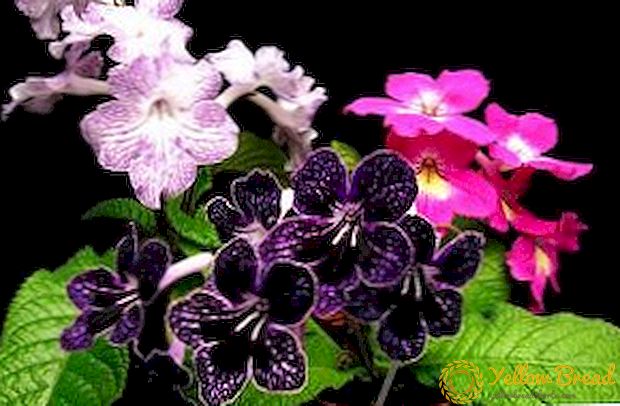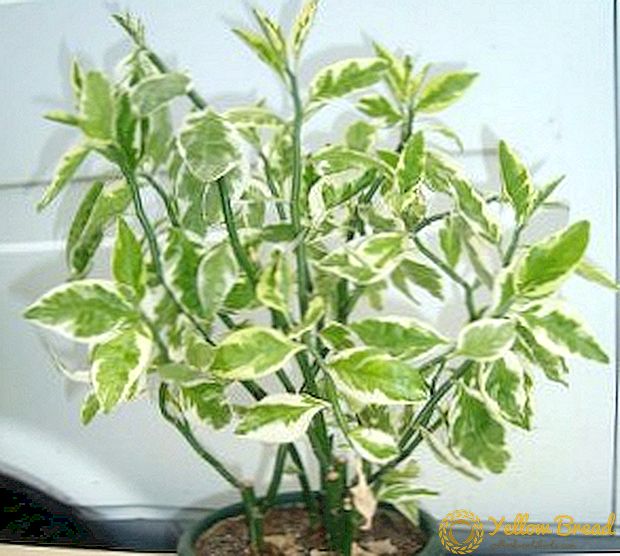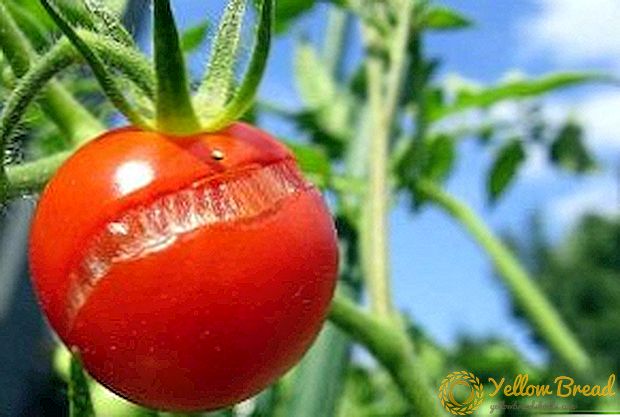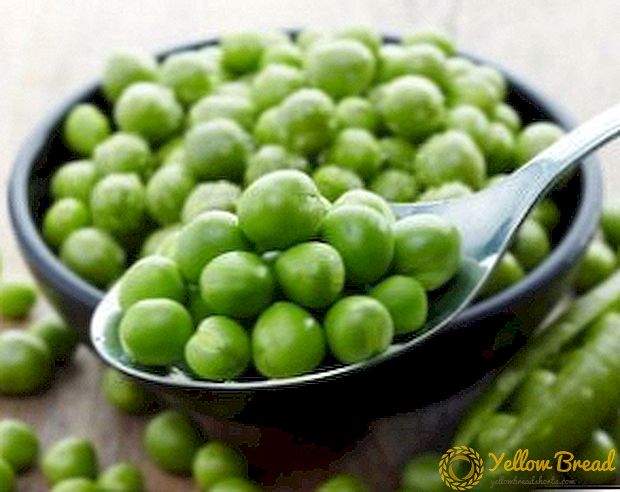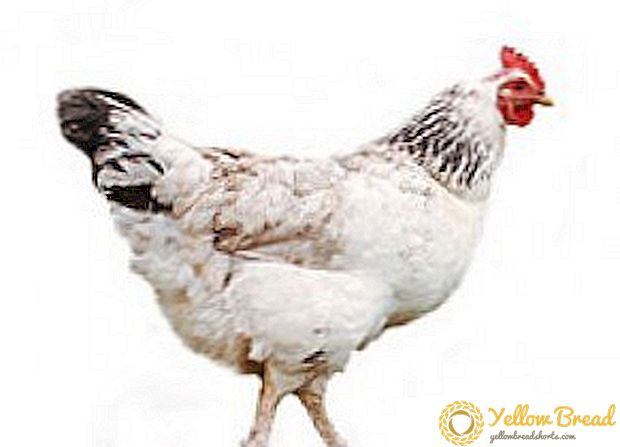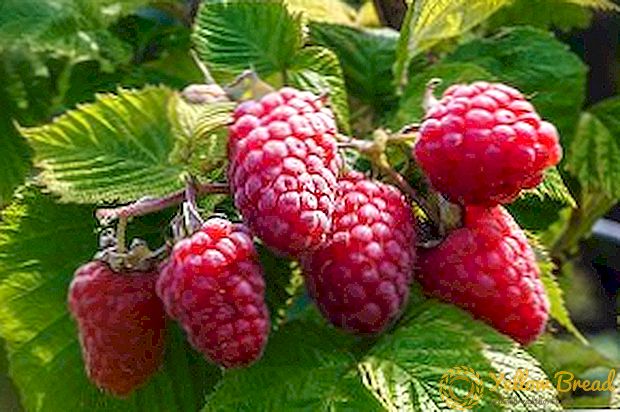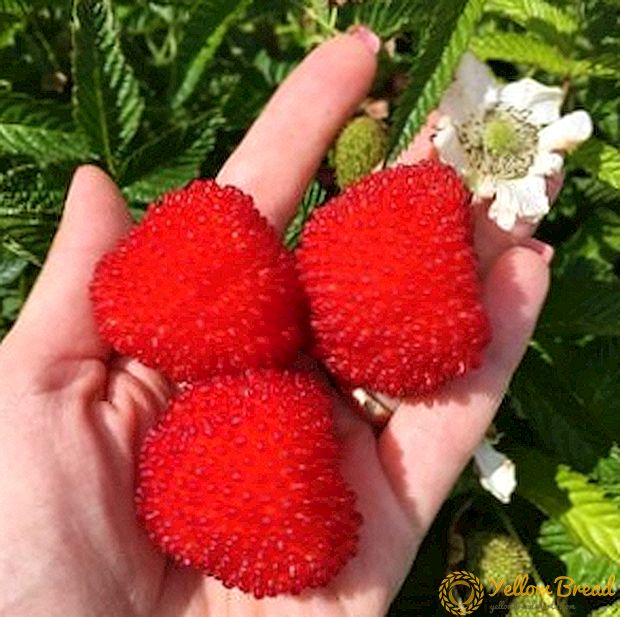 Want on your site unusual raspberry bush with strawberry-like sweet fruits and decorative leaves that resemble a blackberry? This berry mix is called Tibetan raspberries. Today, the inhabitants of the Baltic states and Poland are well aware of it, while in Ukraine the species is still an unknown wonder. Let's get acquainted with him soon! Next, we describe the features of planting, care and reproduction of this variety of raspberries.
Want on your site unusual raspberry bush with strawberry-like sweet fruits and decorative leaves that resemble a blackberry? This berry mix is called Tibetan raspberries. Today, the inhabitants of the Baltic states and Poland are well aware of it, while in Ukraine the species is still an unknown wonder. Let's get acquainted with him soon! Next, we describe the features of planting, care and reproduction of this variety of raspberries.
- Description and photo
- Growing conditions
- Lighting and location
- Soil requirements
- Planting and reproduction
- Dividing bush
- Cuttings
- Spikes
- Seeds
- How to care for a variety?
- Watering
- Top dressing
- Pruning shoots
- Protection against diseases and pests
- Wintering plants
Description and photo
The unique combination of taste and quality of fruits, as well as the compactness and decorative attractiveness of the shrubs interested many European gardeners and designers. The plant has long been desirable in the gardens of China and Japan, where it came from. In the detailed description of the variety and photos we will analyze what the value of the Tibetan raspberry is. 
In scientific sources, this species of berry shrub is denoted as roseberry raspberry (Rubus rosaefolius), that is representative of the blackberry-raspberry genus Rubus. In the wild, culture is found in African and Australian lands, as well as in East Asia. Botanists attribute it to deciduous tropical varieties.
Outwardly, it is a medium-sized plant with red-brown or grayish bare and soft-haired branches about 1.5-2 m in height.
Corrugated leaves are attached to sprouts by long cuttings and are divided into 5-7 small lengths. Their characteristic feature is bilateral pubescence, light glands and jagged edges.

Strawberry raspberry blooms with large inflorescences, on the site of which bright red juicy berries of oblong-oval shape ripen in summer.Each of them is on average about 1.5 cm wide and 1.2 cm long. In the taste of the fruit there are notes of strawberries and blackberries. A special aroma is manifested in jams and jams.
The main qualities of the shrub are: rapid survival, aggressive growth, frost resistance, unpretentiousness to the conditions of cultivation and ease of care.

Growing conditions
Tibetan raspberry does not require special conditions for planting and care for her is also traditional. Experienced gardeners are advised to immediately limit the bush in reproduction, otherwise it will spread over the entire territory, displacing both annual and perennial crops on its way. Also, when placing plants in the berry should pay attention to 2 important nuances. Consider them in more detail.
Lighting and location
All kinds of raspberries love the sun. Ripening under ultraviolet rays, their fruits are filled with sweetness and a pleasant aroma. The Tibetan variety adapts well to the penumbra, although it does not tolerate damp and wetlands.The well-lit flat zone would be an ideal place for planting such a berry. To limit unnecessary growth, many gardeners place bushes along the fence, and some owners share the experience of digging into the ground around the perimeter of the raspberry paper of old slate, rubber tape, and iron. These materials, when deepened to 50 cm, does not allow aggressive shrubs to go beyond the designated area.

Soil requirements
Rubus prefers to grow on light nutrient soils with good drainage and neutral or alkaline acidity. Therefore, in the process of planning the berry be sure to check the pH reaction, if necessary, correct it.
For strawberry raspberry is ideal chernozem and loamy substrate. The main thing is that it does not collect water during the thaw and rain.
In the case of spring planting soil preparation, it is desirable to do in October, but if you have planned all the work for the fall, then at least a month before rooting. The preparatory stage in the berry consists of a thorough digging of the soil with a depth of 30 cm.After that, you need to make mineral fertilizers or organic. In the first variant, superphosphates (approximately 50 g per square meter) and potash substances (40 g) are recommended, and in the second, humus, compost, chicken manure. 
Planting and reproduction
Rooting raspberry rooting technology is no different from the classic varieties. And the process of reproduction does not cause any trouble at all. Get a new seedling can seed and vegetative ways. Consider each of them separately.
Dividing bush
This method of propagation of plant crops the easiest and most effective. It consists in digging a bush with the subsequent division of rhizomes. This is done with a sharp shears or shovel. It is important that the root buds are not damaged. When mass planting in a row, grooves are made at a distance of 15 cm, and the width between the rows is doubled. 
Pristvolny circles of young bushes must be mulched peat or sawdust. Otherwise they may not overwinter.
Cuttings
Preparation of planting material needs to be carried out on the peak of the growing season. In this case, the minimum length of the cuttings should not be less than 10 cm. Some gardeners are advised to treat the lower part of the shoots with a growth stimulator ("Kornevin", "Ekosil"). But this moment is not at all necessary, since the Tibetan raspberry is well acclimatized without intervention and assistance. Then the cuttings are immediately placed in the open ground, placing the sections in the furrows under the slope, and covered with substrate. This technology requires regular moisturizing procedures, otherwise the cuttings will wither.

Spikes
As a rule, in the first year a compact bush grows from a sapling of a Tibetan rubus, and in subsequent years it begins to actively develop and multiply. To obtain a process in the spring, you need to dig up the young shoots and cut off its roots from the mother bush. Then transplant the seedling to a new plot.
Seeds
In this way, raspberries are multiplied very rarely, because it takes a lot of time and does not always justify the resources spent. Grains are first disinfected with potassium permanganate.And then planted in sodden peat tablets. To accelerate germination capacity with a "bed" covered with polyethylene and sent to a warm place. Strengthened shoots gently transplanted to a permanent place.
Also practiced sowing seeds right in open ground. This option requires less effort and care, but it develops much more slowly than the previous one. 
How to care for a variety?
Gardeners who have already dealt with the Tibetan hybrid, talk about the elementary nature of his care. Culture does not need much attention. For the full development of its need to be watered regularly, fertilized and periodically cut.
Watering
Frequent moisturizing procedures rubus to anything. The shrub does not tolerate excess moisture and easily adapts to drought. But if it is not watered at all, the berries will lose their juiciness and fall prematurely. To prevent this from happening, you need to water the plant. during the long absence of rain. This is done in the evening. Irrigation raspberries do not need. It is enough to pour a bucket of water under the root.For a good harvest, make sure that the surface layer of the soil in the stem wells does not dry out.
Many gardeners mulch berries to retain moisture in the soil. For raspberries as a mulch is not recommended to use coniferous materials. The fact is that they contribute to the oxidation of the earth, which is extremely unfavorable for rubus. 
Top dressing
Every spring the shrub needs to be replenished. At the beginning of the growing season, a weakly concentrated solution of mullein or chicken manure is poured under it (1:10). Alternatively, dry ammonium sulfate granules can be used.
The second dressing for rozolistnoy raspberry relevant in the fall. Then sulphurous potassium is scattered in the berry. During this period, it is highly undesirable to introduce nitrogen-containing substances, since they will provoke the growth of young shoots. In this form, despite the genetic cold resistance, the plant does not overwinter. 
Pruning shoots
Like any raspberry, the Tibetan variety does not require permanent formative trim. The main task of the gardener is to completely remove the stems at the end of the fruiting season.Considering that the rosolitic species pleases the hosts with berries up to the most frost, this period will not come until October. Then it will be necessary to remove the crown with sharp shears, leaving 3-centimeter stumps.

Protection against diseases and pests
Despite the high level of endurance to adverse conditions, rozolistnaya raspberry is very sensitive to anthracnose, blotch, rust, root cancer, chlorosis. Also on the bushes like to settle malicious raspberry beetles and weevils.
To save the berries from fungal and bacterial diseases, agrochemists advise fungicides ("Fundazol", "Skor", "Maxim"), as well as bordoskoy mixture and copper sulfate.In advanced cases, complete destruction of affected vegetation and disinfection of the site will be required. In such situations, the surviving bushes are dug and transplanted to a new area.
Planting insecticides save them from parasitic insects (Aktellik, Aktara, DDT, Detoil, Karbofos). 
The best prevention from adversity is competent care and compliance with the rules for the cultivation of berry crops. Experienced gardeners on the list raspberry taboo called:
- waterlogging;
- overgrown weeds;
- lack of dressings;
- sour soil.
Wintering plants
Adult bushes tolerate winter very well and do not require additional sheltered. But the young seedlings need third-party help. With the onset of cold weather such instances cut and covered with agrofibre. Top cover spruce branches. Other gardeners are advised to do with regular peat or humus, which is poured in a raspberry tree 10-centimeter layer. With the onset of heat, all structures must be removed so that the plant does not stray out. 
In the reviews about the decorative and taste qualities of raspberry rosolistus, its planting and care, gardeners point to the positive characteristics of the variety. Some talk about the specific taste of berries, designed "for the amateur", but everyone agrees on the need for several bushes in the yard - even for decoration, even for delicacy.

